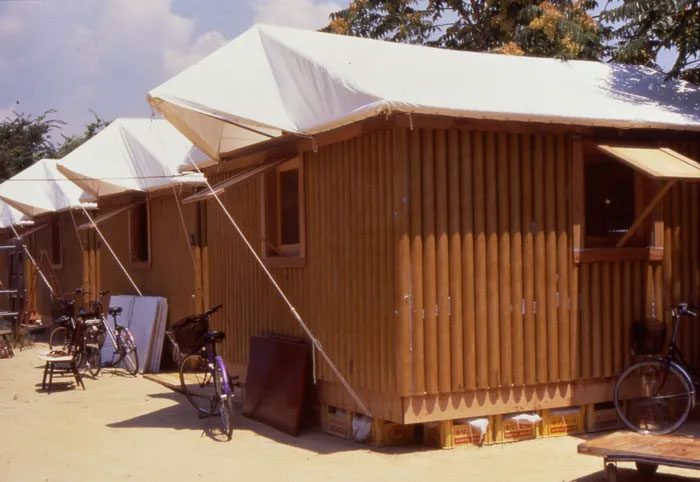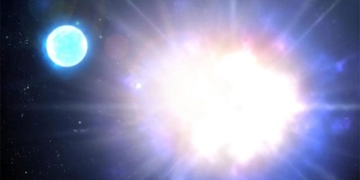The temporary houses created by Ban are called Kobe Paper Houses and provide safe, warm shelter for thousands of refugees in need of evacuation.
In January 1995, young architect Shigeru Ban arrived in Kobe, Japan, witnessing the aftermath of one of the most devastating earthquakes in history.

Shigeru Ban is known as the “wizard” who builds houses from cardboard for refugees. (Source: vietnamconstruction).
The Great Hanshin-Awaji Earthquake, measuring 7.2 on the Richter scale, along with 74 aftershocks, resulted in the deaths of 6,433 people, destroyed nearly 400,000 buildings, and caused extensive damage to roads and railways, as well as a large portion of the harbor’s seawall. Approximately 300 fires broke out in the city, disrupting the electricity, water, and gas supply.
Kobe residents recounted to Ban the violent shakes that jolted them from their beds at dawn. In just 20 seconds, the world was filled with the sounds of shattering glass, falling tiles, and the cracking of old wood. As survivors cautiously stepped outside, what they saw resembled hell. Windows shattered. Cars wrecked. Homes collapsed. Corpses lay scattered everywhere. Seismologists later identified the epicenter on a strike-slip fault running east-west where the Eurasian and Philippine tectonic plates meet. The earthquake caused more than $100 billion in damages.
Ban was among 1.2 million (an astonishing number) volunteers who flocked to the Kobe area to provide relief and assistance. As an architect, he felt that too many of his colleagues, including himself, had not done enough to help the thousands who lost their homes in the disaster. “We weren’t working to serve society,” he recalled.
“We worked for the privileged, the wealthy, and government developers.”
Ban knew he needed to take action to improve the situation. After witnessing a local Catholic church completely destroyed, he approached the priests with a bold proposal.

Kobe Paper House. (Source: archdaily).
“Why don’t we rebuild the church using paper tubes?” he asked.
The exchange was brief and surreal. “Oh, my God,” the priests skeptically responded. “Are you crazy? After the fire?” They flatly rejected the idea. Who in their right mind would agree to build a house out of paper?
Undeterred, Ban recruited volunteers and proceeded with his plan to construct homes for the most in-need people in Kobe using recycled paper tubes. This building material proved to be sturdy, affordable, and resistant to moisture and termites, and perhaps most surprisingly, it was also water- and fire-resistant.
Ban’s temporary houses are called Kobe Paper Houses and provide safe, warm shelter for thousands of refugees needing evacuation. The foundations of the houses are beer crates filled with sandbags.
For insulation, Ban used waterproof foam tape reinforced with adhesive, inserted between the paper tubes of the walls. Each house cost less than $2,000. After Ban built 50 houses, the priests finally softened. They said, “As long as you call for donations and bring students to build, you can do it.”
Thus, Ban spent five weeks rebuilding the Takatori Church, which later became world-famous as the Paper Church. Although the original plan was for it to last only three years, the church became beloved and stood in Kobe for over a decade. Eventually, it was dismantled and transported to Taiwan.
To this day, this church remains a fixed site for services, primarily serving the victims of earthquakes on the island. Ban’s easily constructed paper houses are now frequently used throughout Japan—and around the world—when disasters strike.


















































